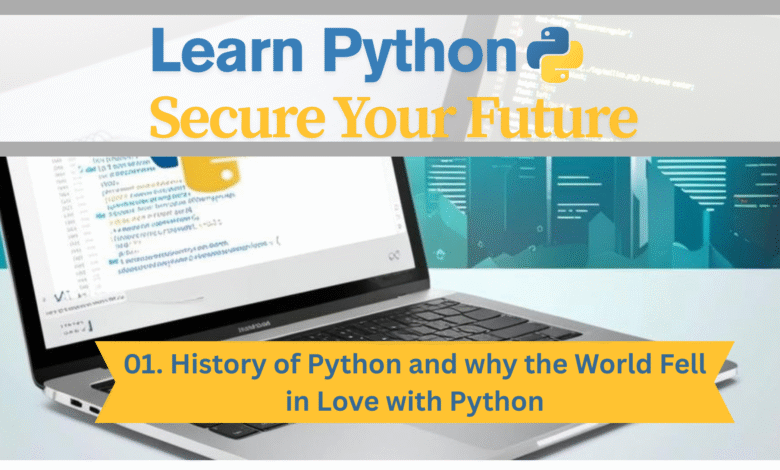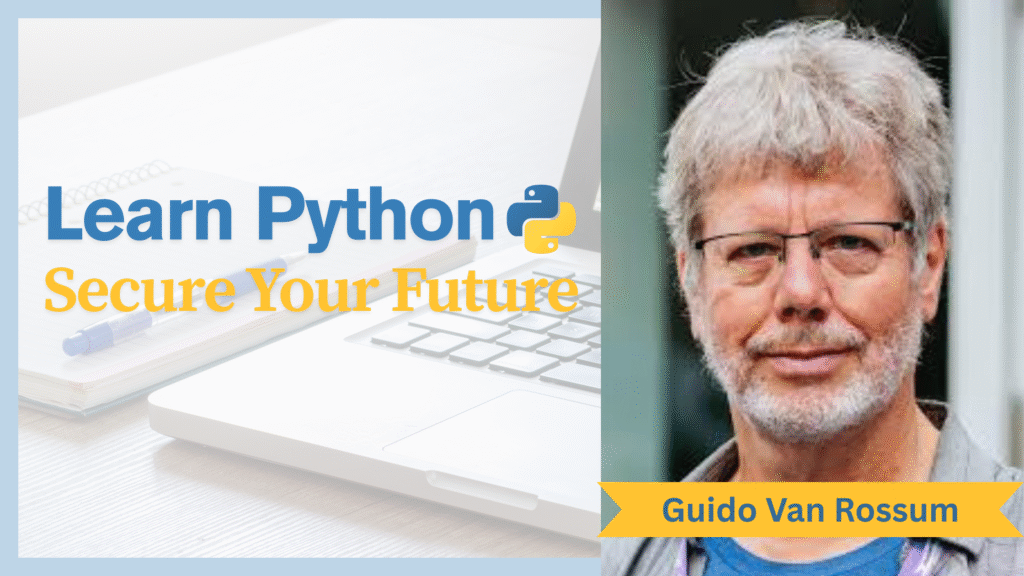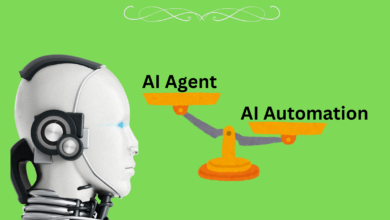The Story Behind Python, Why the World Fell in Love with Python (2025)?

When we think of programming today, Python is one of the first languages that comes to mind. It’s simple, elegant, and powerful (the favorite of both beginners and experts). But have you ever wondered where Python came from? Let’s take a deep dive into the journey of Python (a story of vision, community, and evolution).
The story of Python begins in the late 1980s with a Dutch programmer named Guido van Rossum. Guido was working at the Centrum Wiskunde & Informatica (CWI) lab in the Netherlands and was involved in a project called ABC, (a language designed for teaching programming to non-professionals).

Although ABC had a lot of innovative features, it was not flexible enough for practical software development. Guido appreciated the good parts of ABC but wanted a more extensible and powerful language. So, during his Christmas break in December 1989, he started working on a new hobby project — a language that was both easy to read and write, yet enough for serious programming.
Why the Name “Python”?
You might be wondering: “Does the name come from the snake?”
Surprisingly, no.
Guido was a big fan of the British comedy series “Monty Python’s Flying Circus.“ He wanted a name that was short, unique, and a bit mysterious. So he picked “Python” — and the rest is history!
The First Release
Python 0.9.0 was released in February 1991. It already had core features we still use today:
- Exception handling
- Functions
- Modules
- The
printstatement - Core data types like
str,list,dict, etc.
What made this language stand out was its focus on readability and simplicity. Guido followed the principle: “There should be one — and preferably only one — obvious way to do it.”
Python quickly gained attention from the programming community. Developers loved its clean syntax and versatility. Over time, a community began to grow around it, leading to regular improvements and expansions.
- Python 1.0 was released in 1994.
- By 2000, Python 2.0 introduced list comprehensions, garbage collection, and Unicode support (setting the stage for even wider adoption).
- However, Python 2 had its limitations and inconsistencies that made future progress difficult.
🔄 The Major Shift: Python 3
In 2008, Python 3.0 was released. It wasn’t just an upgrade — it was a complete redesign to fix the “warts” of the earlier versions. It improved the language for the future, but at a cost: it broke backward compatibility.
Many developers were hesitant to make the switch. For years, both Python 2 and Python 3 were developed in parallel. But finally, on January 1, 2020, Python 2 reached its end-of-life, marking the full transition to Python 3.
Over the years, Python has grown from a hobby project to one of the most popular programming languages in the world. It is used for:
- Web development (Django, Flask)
- Data science and AI (NumPy, Pandas, TensorFlow)
- Automation and scripting
- Education and beginner-friendly coding
In surveys by Stack Overflow, GitHub, and TIOBE Index, Python consistently ranks among the top programming languages globally.
❤️ A Language Driven by Community
One of Python’s greatest strengths is its community. From beginners asking questions on Stack Overflow to developers contributing to open-source projects, Python’s growth has been fueled by collaboration and inclusivity.
The Python Software Foundation (PSF) continues to guide the language’s development and support its vibrant ecosystem.
🔮 The Future of Python
Python shows no signs of slowing down. With the rise of AI, machine learning, and automation, Python is more relevant than ever. Its ease of use and wide applicability make it the language of choice for innovation.
Whether you’re building a web app, analyzing data, or teaching your first programming class — Python is always there, evolving with you.
Python’s history is not just about a language — it’s about people, ideas, and the passion to make coding more accessible. From Guido’s spare-time experiment to a worldwide phenomenon, Python’s story reminds us that simplicity, when combined with power, can change the world.
So the next time you write print("Hello, World!"), know that you’re continuing a legacy that began over three decades ago — and it’s still going strong.
Also Read: 5 Real AI Agent Business Ideas For 2025





Great 👍